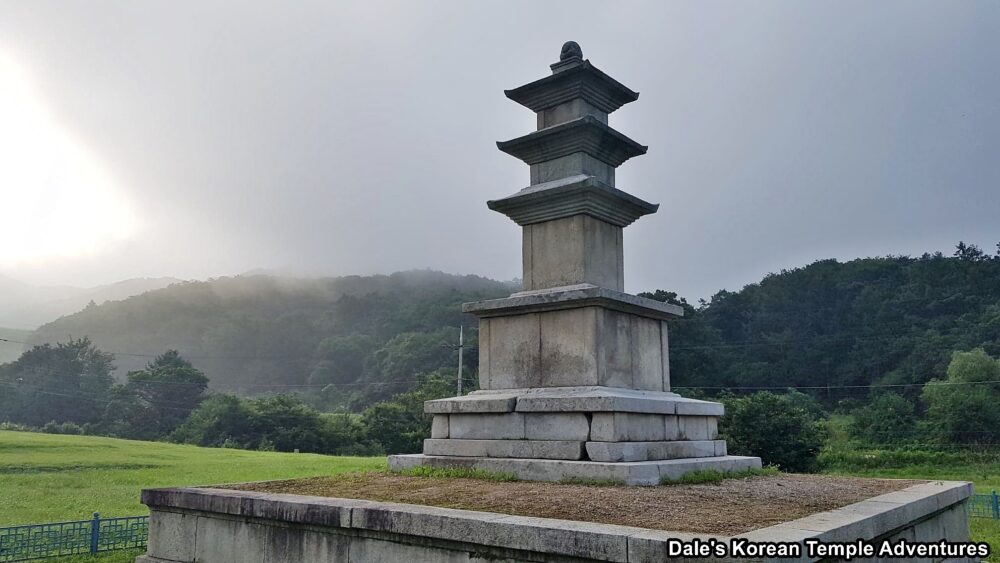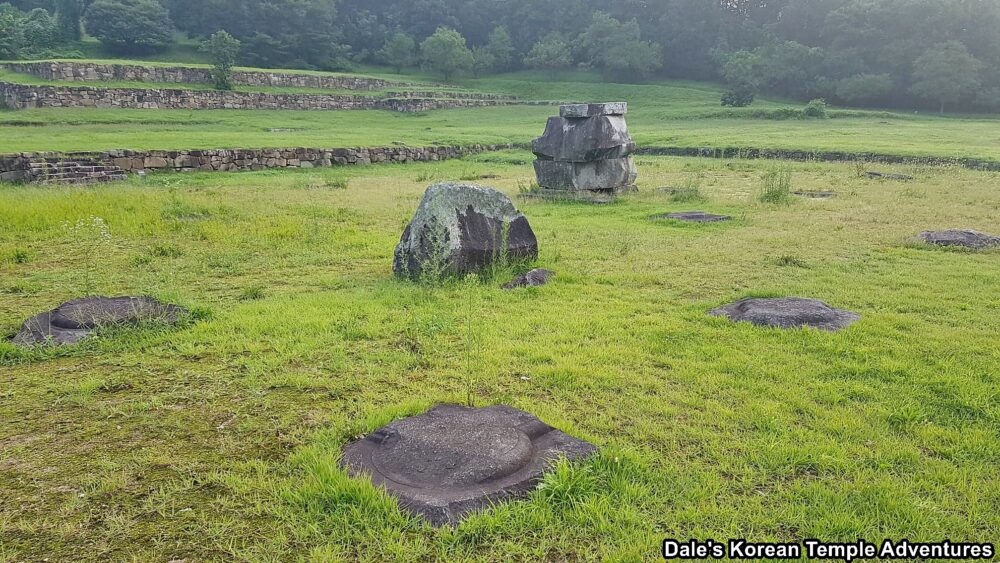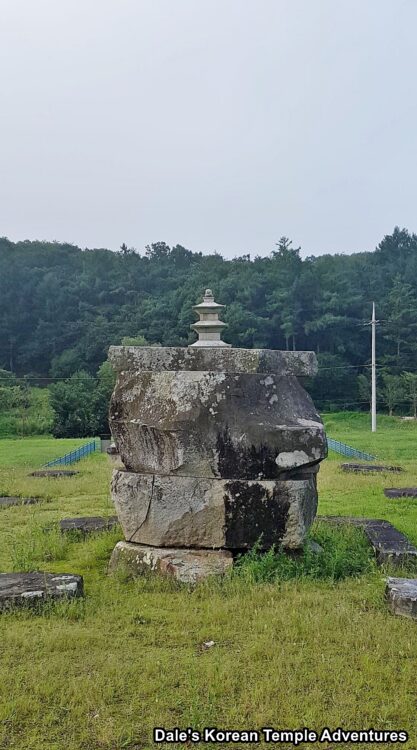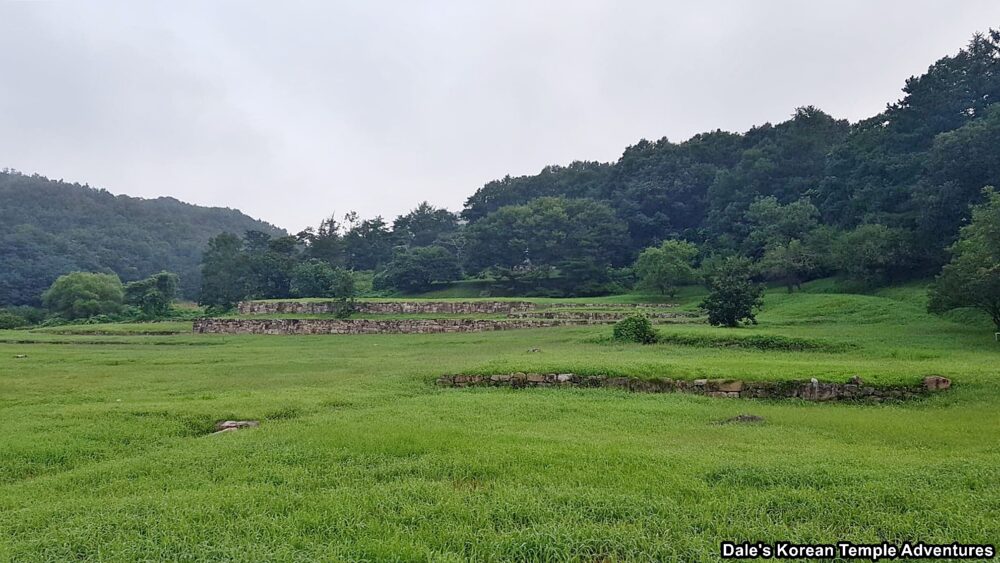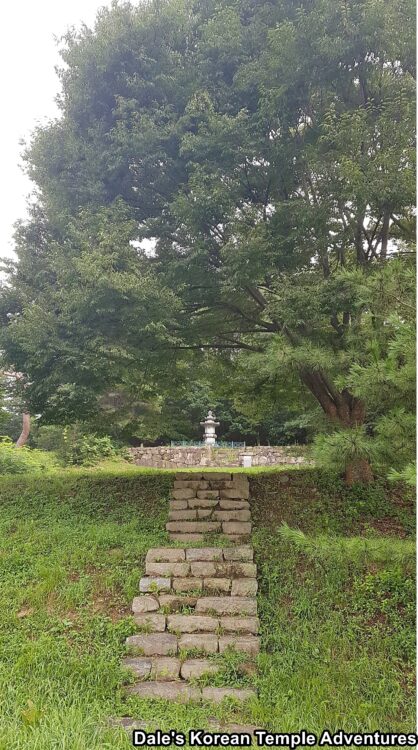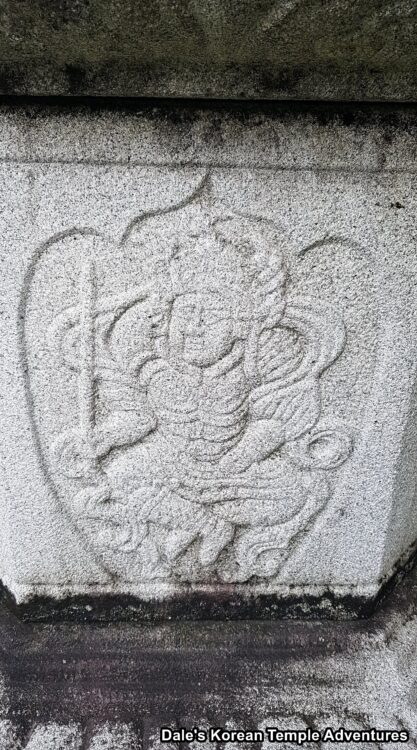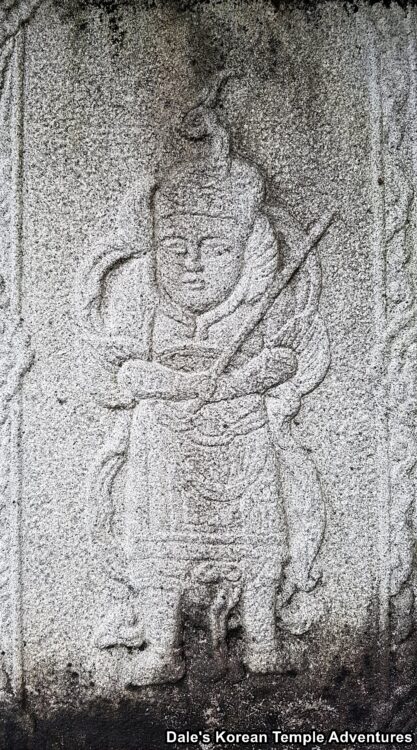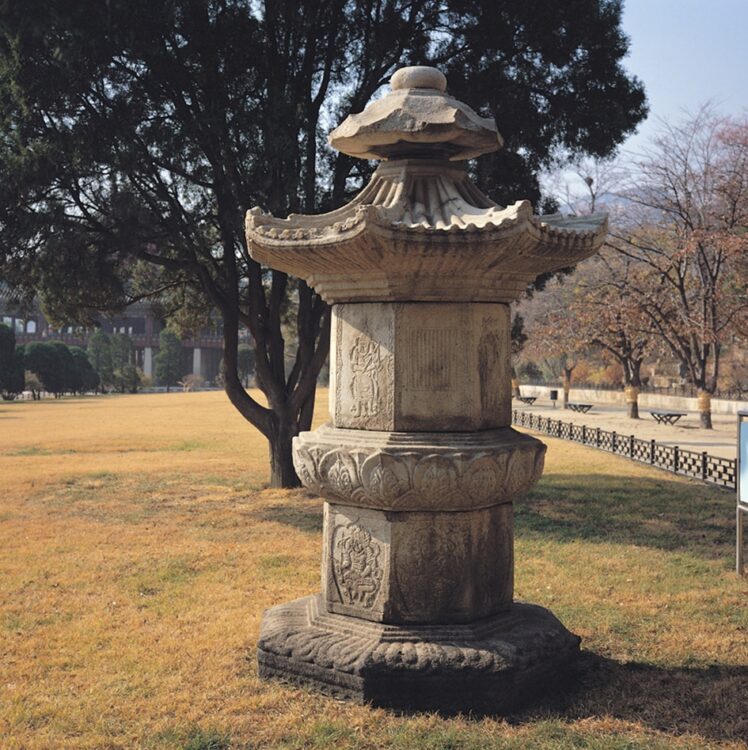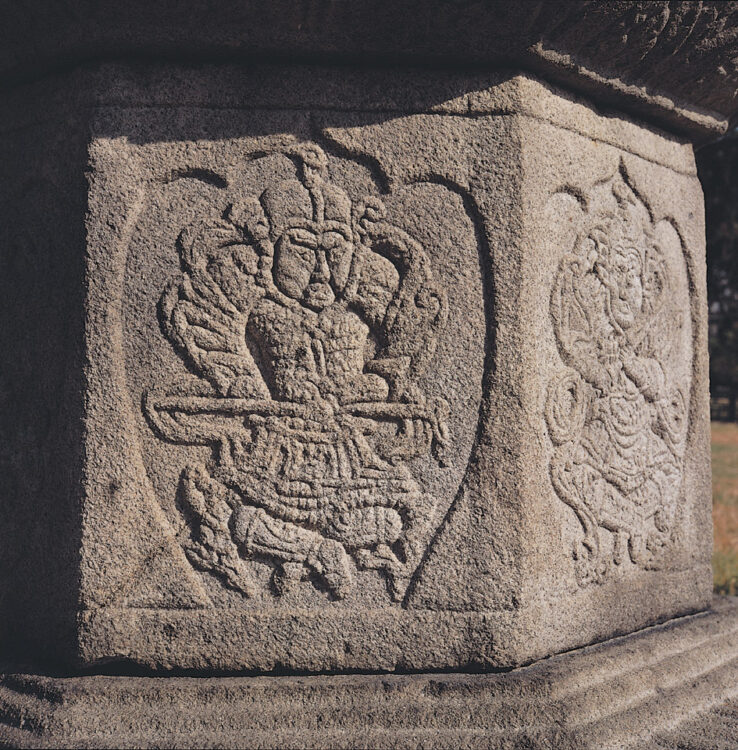Geodonsa-ji Temple Site – 거돈사지 (Wonju, Gangwon-do)
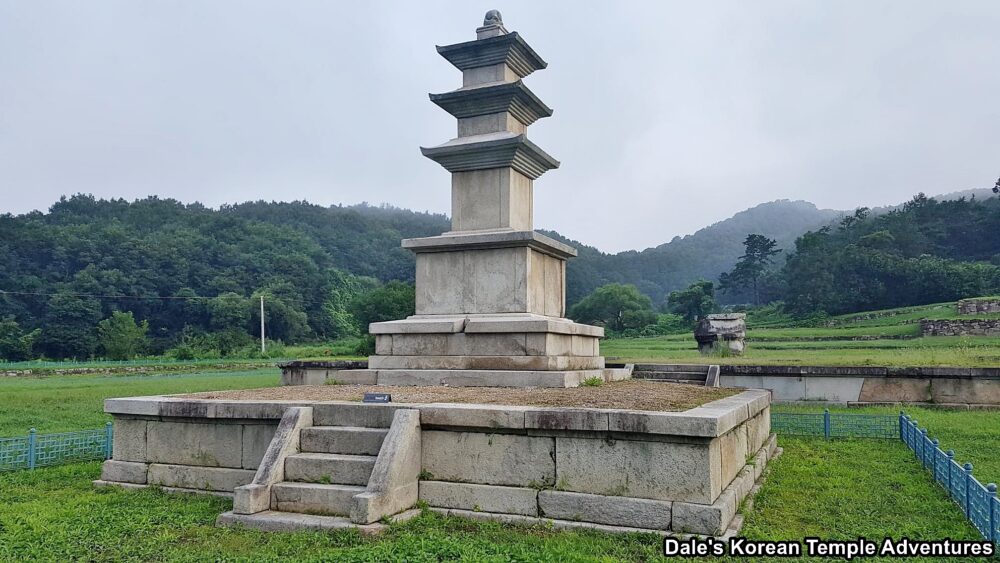
Temple Site History
The Geodonsa-ji Temple Site is located to the southwest of Mt. Hyeongyesan (535.6 m) in Wonju, Gangwon-do. It’s believed that the temple was first constructed around the 9th century during late Silla (57 B.C. – 935 A.D.). It was later expanded and repaired in the early Goryeo Dynasty (918-1392). And the temple was kept operational until the early Joseon Dynasty (1392-1910). During archaeological work on the Geodonsa-ji Temple Site, a middle gate, pagodas, a main hall, a lecture hall, monks’ dorms, and wide corridors were all discovered.
Geodonsa Temple was the headquarters for Beopan-jong Order, which was a fusion of Seon Buddhism and Hwaeom Buddhism. It was first founded by the monk Munik (885-958 A.D.). His teachings were popular during the early Goryeo Dynasty. However, with its eventual decline, it was absorbed into the Cheontae-jong Order by the mid-Goryeo Dynasty.
The Geodonsa-ji Temple Site has a bit of an interesting design in that it only has one pagoda, which was rare at a Silla-era temple, since most had two pagodas stationed out in front of the main hall. And the Three-Story Stone Pagoda at Geodonsa Temple Site, which is Korean Treasure #750, is assumed to have been constructed at the very same time that the temple was first established.
To the east of the main hall site and the three-story pagoda, you’ll find the Stele for State Preceptor Wongong at Geodonsa Temple Site, which is Korean Treasure #78. The stele is dedicated to Wongong-guksa (930-1018 A.D.). The inscription on the stele was written by Choe Chung (984-1068). And the stele reads, “When Gwangjong [of Goryeo, r. 949-975 A.D.] ascended the throne, he revered Buddhism and explained the truth of Snow Mountain [Seollyeong, where the Buddha prayed], displaying supernatural effects in order to seek the real Buddha of Danxia [refers to Danxia Tianran (737-824), who purportedly found the sari of the Buddha in the ashes of a wooden Buddha statue he had burned], and implemented the monastic examination.”
Here’s a little more on the cryptic meaning behind the reference to Danxia Tianran, who was a disciple of Shitou Xiqian. During Danxia’s travels, he stopped one day at Huilin Temple. It was really cold, but there was no wood to burn for warmth. Unable to bear the cold any longer, Danxia entered the prayer hall at Huilin Temple, took the wooden statue of the Buddha on the altar, and burned it to heat the room. The abbot of the temple got angry and scolded Danxia and said, “How is it possible that a monk burns a statue of the Buddha?” Without offering an answer, Danxi went to the fireplace where he had burned the statue of the Buddha, holding a stick, he searched the ashes, only to discover the sari of the Buddha. The monk reprimanded him, asking Danxia how it was possible to find sari of the Buddha from a wooden statue. Danxia replied that if no sari could be found, then he would take the other statues from the other halls, as well, to use as fire wood. This story is recorded in the “Jingde chuandeng lu” or “Record of the Transmission of the Lamp in the Jingde Period” in English.
And next to the Stele for State Preceptor Wongong at Geodonsa Temple Site originally stood the Stupa of State Preceptor Wongong from Geodonsa Temple Site, which is Korean Treasure #190. However, during Japanese Colonial Rule (1910-1945), the stupa was kept at a Japanese house. Later, and in 1948, after Japanese Colonial Rule, the stupa was moved to Gyeongbokgung Palace. And now, it’s housed at the National Museum of Korea.
In total, the Geodonsa-ji Temple Site is home to three Korean Treasures; one of which, as already mentioned, is housed at the National Museum of Korea. Also, the Geodonsa-ji Temple Site is Historic Site #168.
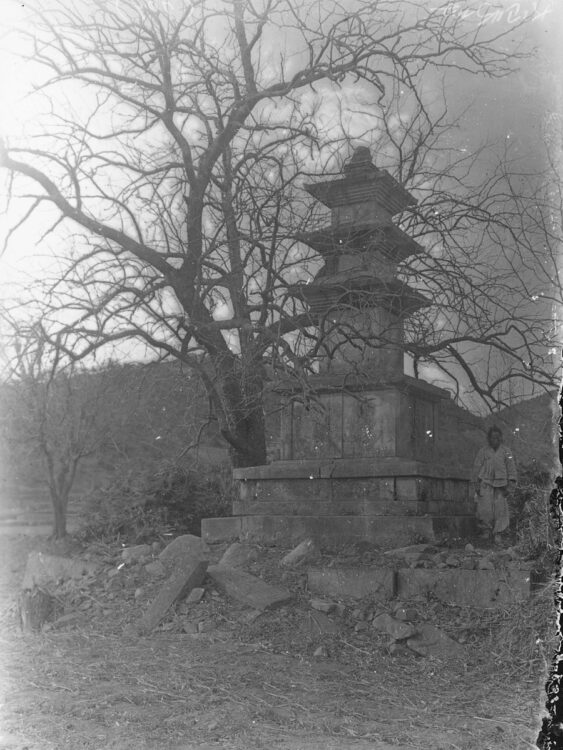
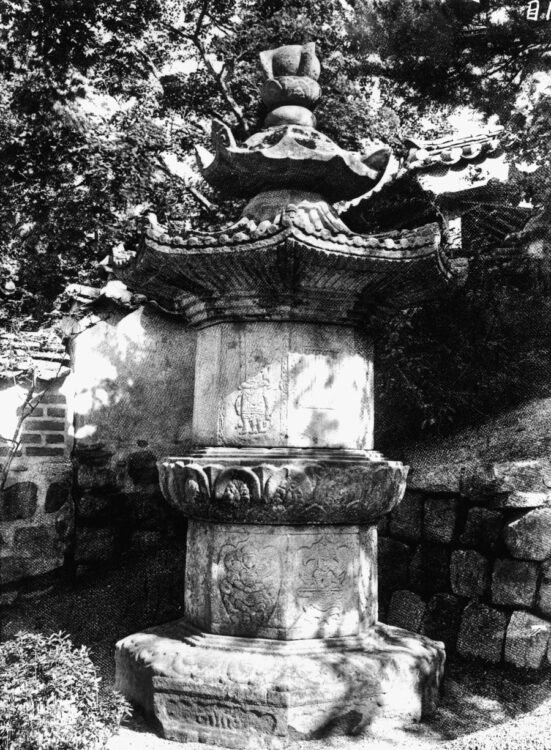
Temple Site Layout
The Geodonsa-ji Temple Site has a massive area of some 25,339 m2. The temple site is located on a elevated plateau with a handful of Korean Treasures spread throughout the grounds. The first of these Korean Treasures is the Three-Story Stone Pagoda at Geodonsa Temple Site. The three-story pagoda is supported by a three-layered base consisting of a bottom, middle, and top, each of which consists of four separate pieces of stone. The top of the base is unadorned, while the pillar-shaped stones are inserted horizontally in the middle section. The core stones and roof stones of the body are each created from a single stone. The roof stones curve upwards swiftly on each of their corners. As for the finial, all that remains of it is the square base for decoration. More recently, a large lotus bud has been attached to the finial. Overall, it’s believed that the three-story pagoda was built during the 9th century.
To the rear of the three-story pagoda is the foundation for the Geumdang-ji Hall, which was the main hall at the Geodonsa-ji Temple Site. Now all that remains of the main hall, besides the elevated stone structure that the Geumdang-ji Hall once stood upon, are stone supports on the ground of the former shrine hall and a central stone altar that is largely damaged and stands two metres in height. To the east of the Geumdang-ji Hall is the elevated eastern corridor and gate. To the rear of the Geumdang-ji Hall, and slightly up the embankment, is what looks to be a large lecture hall in accordance with the typical design and layout of a Silla-era temple. And to the rear of the lecture hall’s elevated foundation stones are the remains of other elevated auxiliary buildings’ foundation stones.
To the far north of the temple grounds is the a replica of the Stupa of State Preceptor Wongong from Geodonsa Temple Site. The replica was placed on the Geodonsa-ji Temple Site between 2006 to 2007. Like the original at the National Museum of Korea, this replica is beautifully designed. Located in a clearing in the trees to the rear of the temple site grounds is the replica. Unlike the original, this stupa has a foundation, which allows the three octagonal layers of the base to rest upon. Each face of the base is adorned with decorative flower patterns. The top and bottom parts of the lower body are carved with line patterns, as well as images of the Eight Guardian deities. On the upper portion of the body, you’ll find that the faces of both the front and back of the body are engraved with door and lock designs, while the faces to the right and left have window designs. Additionally, these engravings are joined by the Four Heavenly Kings. The octagonal roof stone has a gradual slope to it, and it appears to be attempting to replicate a wooden structure style. It’s assumed, because the neighbouring stele for Wongong-guksa was first erected in 1025, that the original stupa was also built in the same year.
And the final structure that people can enjoy at the Geodonsa-ji Temple Site is the Stele for State Preceptor Wongong at Geodonsa Temple Site on the east side of the temple site grounds. Unlike the stupa, this is the original stele. The stele consists of three parts: a pedestal, a body, and a decorative capstone. The pedestal of the stele has a turtle body with a dragon’s head, while the pattern on the back of the tortoise has hexagonal patterns joined with manja and lotus flower designs. The body of the stele has a square style of Chinese handwriting. The inscription, as was previously mentioned, was written by Choe Chung. And the calligraphy detailing the life of Wongong-guksa was written by Kim Geo-ung. The decorative capstone, on the other hand, seems quite large in comparison to the tortoise-shaped pedestal. The capstone has an image of a dragon enveloped in flames. And according to a local legend, the capstone is so heavy that it couldn’t be lifted an inch by strong young men or even a cow.
How To Get There
From the Wonju Intercity Bus Terminal, you’ll need to take Bus #55-1 for 61 stops. You’ll then need to get off at the “An-mal – 안말” stop. From this stop, you’ll then need to take Bus #21 or Town Bus #20. After 20 stops, get off at the “Geodonsa-ji – 거돈사지” stop. Overall, with 81 combined stops, it’ll take an hour and twenty minutes. Or if you’d rather take a taxi from the Wonju Intercity Bus Terminal, it’ll take 50 minutes and cost 60,000 won (one way).
Overall Rating: 3.5/10
If you’re a temple site lover like I am, then the Geodonsa-ji Temple Site is for you. More and more, especially as of late, I’ve been enjoying visiting temple sites throughout Korea. And the Geodonsa-ji Temple Site certainly continues that trend. It’s unfortunate that the historic stupa no longer remains on the temple site grounds, but it gives you a pretty good excuse (like you needed one) to visit the National Museum of Korea. As for the temple site itself, the obvious highlight is the Stele for State Preceptor Wongong at Geodonsa Temple Site with its beautiful design, especially the capstone. In addition to this historic stele, you can also enjoy the three-story pagoda, while attempting to imagine just how majestic the former temple must have once been.
